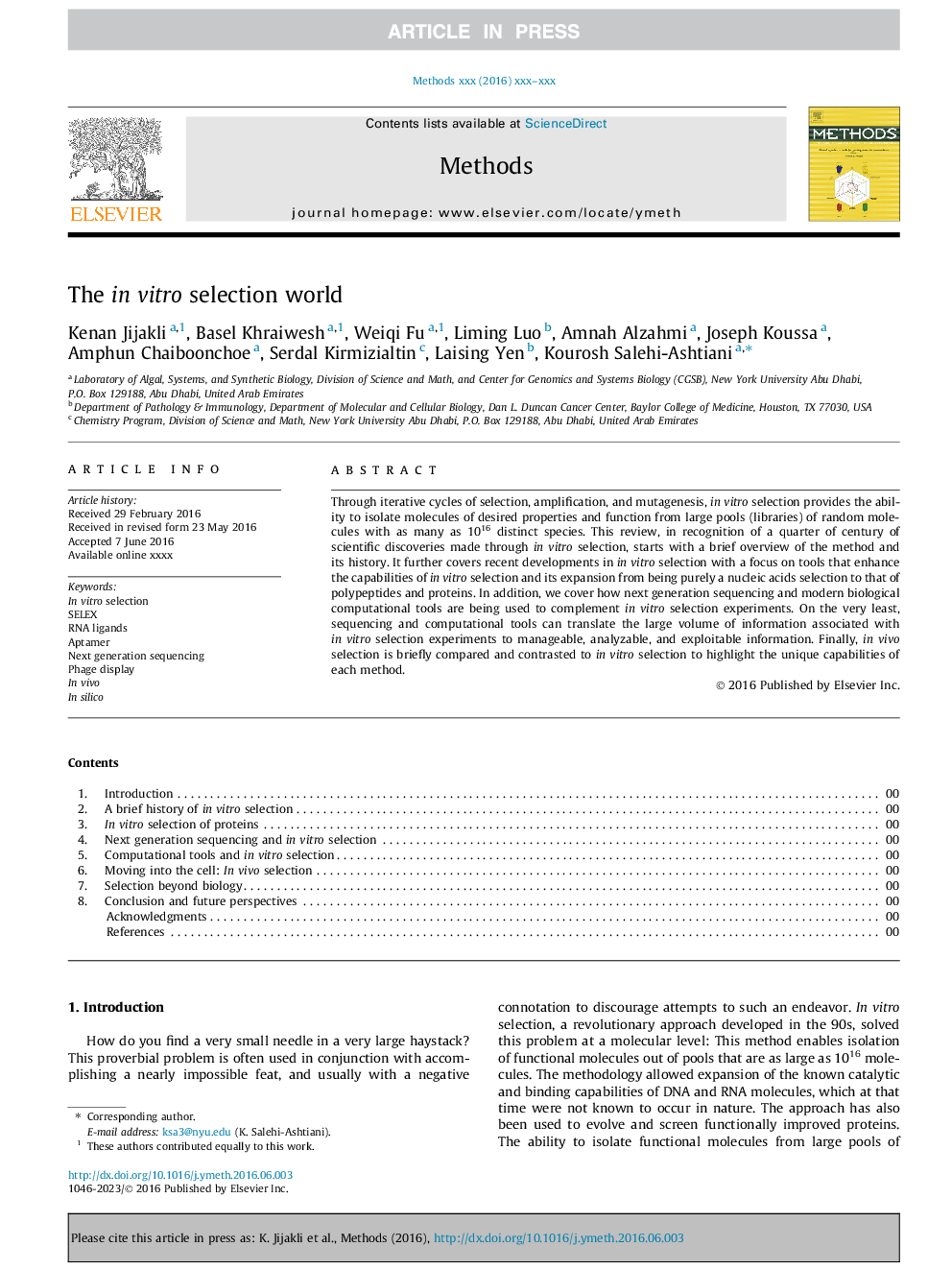| Article ID | Journal | Published Year | Pages | File Type |
|---|---|---|---|---|
| 8340210 | Methods | 2016 | 11 Pages |
Abstract
Through iterative cycles of selection, amplification, and mutagenesis, in vitro selection provides the ability to isolate molecules of desired properties and function from large pools (libraries) of random molecules with as many as 1016 distinct species. This review, in recognition of a quarter of century of scientific discoveries made through in vitro selection, starts with a brief overview of the method and its history. It further covers recent developments in in vitro selection with a focus on tools that enhance the capabilities of in vitro selection and its expansion from being purely a nucleic acids selection to that of polypeptides and proteins. In addition, we cover how next generation sequencing and modern biological computational tools are being used to complement in vitro selection experiments. On the very least, sequencing and computational tools can translate the large volume of information associated with in vitro selection experiments to manageable, analyzable, and exploitable information. Finally, in vivo selection is briefly compared and contrasted to in vitro selection to highlight the unique capabilities of each method.
Related Topics
Life Sciences
Biochemistry, Genetics and Molecular Biology
Biochemistry
Authors
Kenan Jijakli, Basel Khraiwesh, Weiqi Fu, Liming Luo, Amnah Alzahmi, Joseph Koussa, Amphun Chaiboonchoe, Serdal Kirmizialtin, Laising Yen, Kourosh Salehi-Ashtiani,
